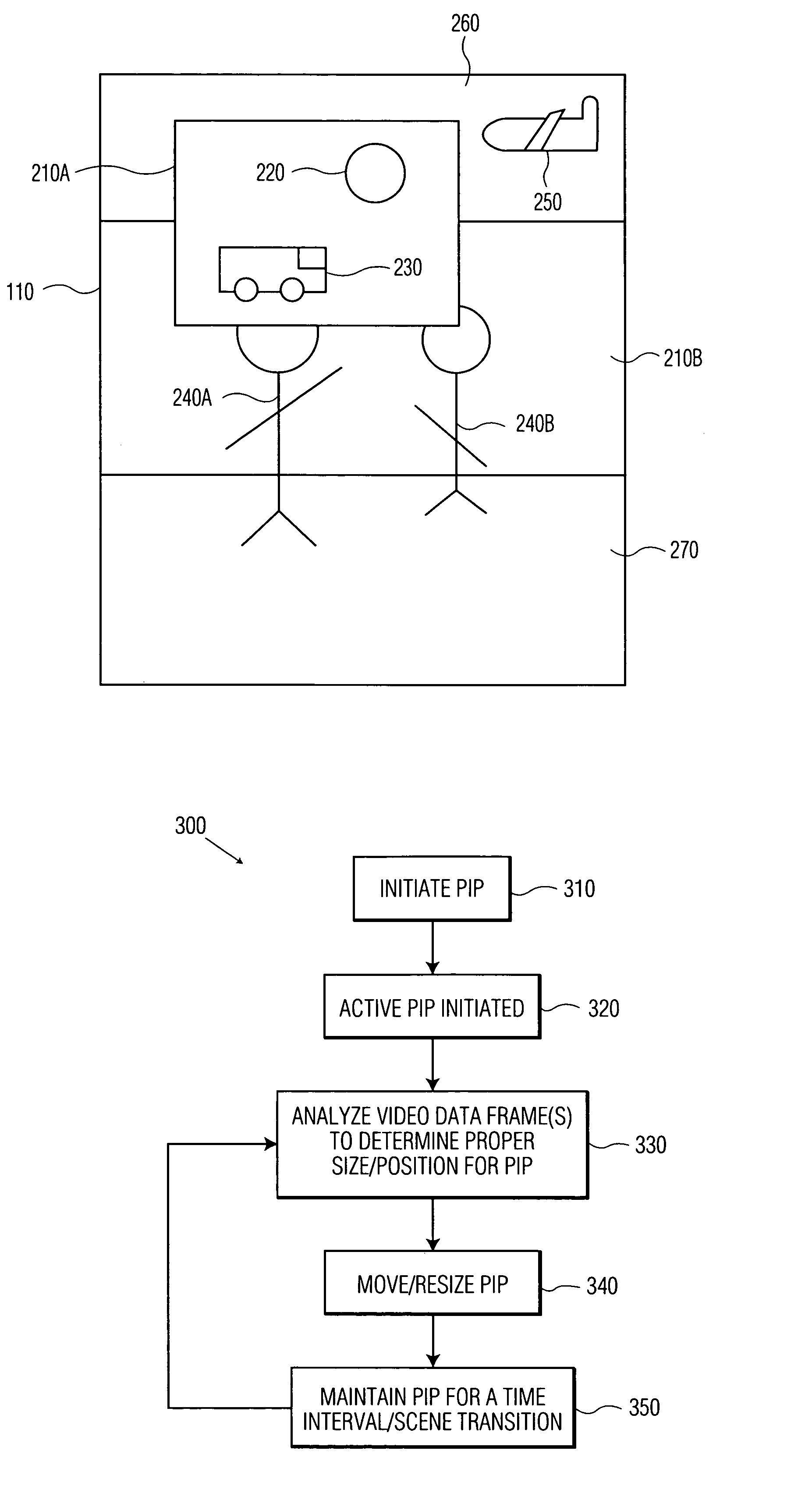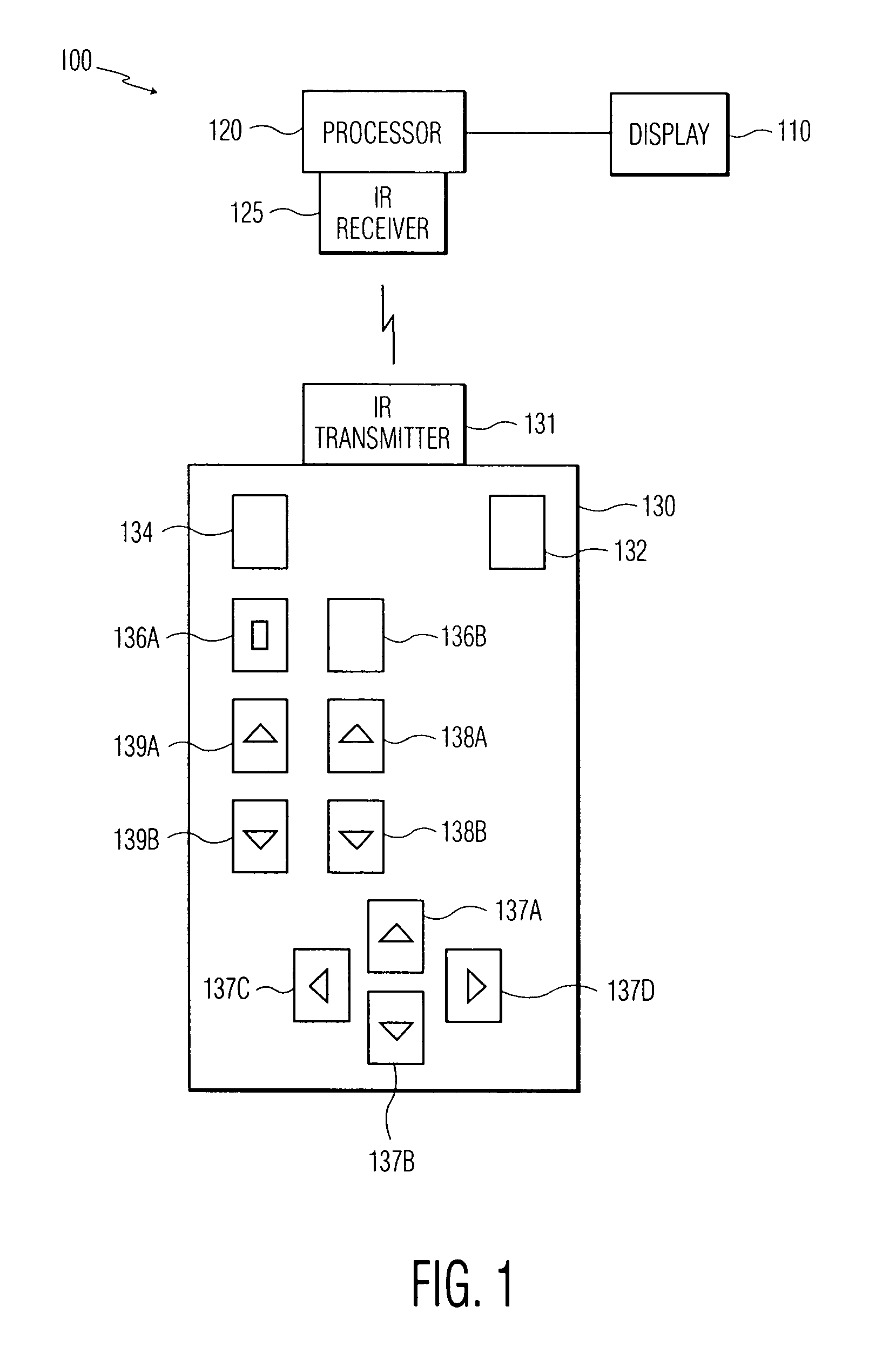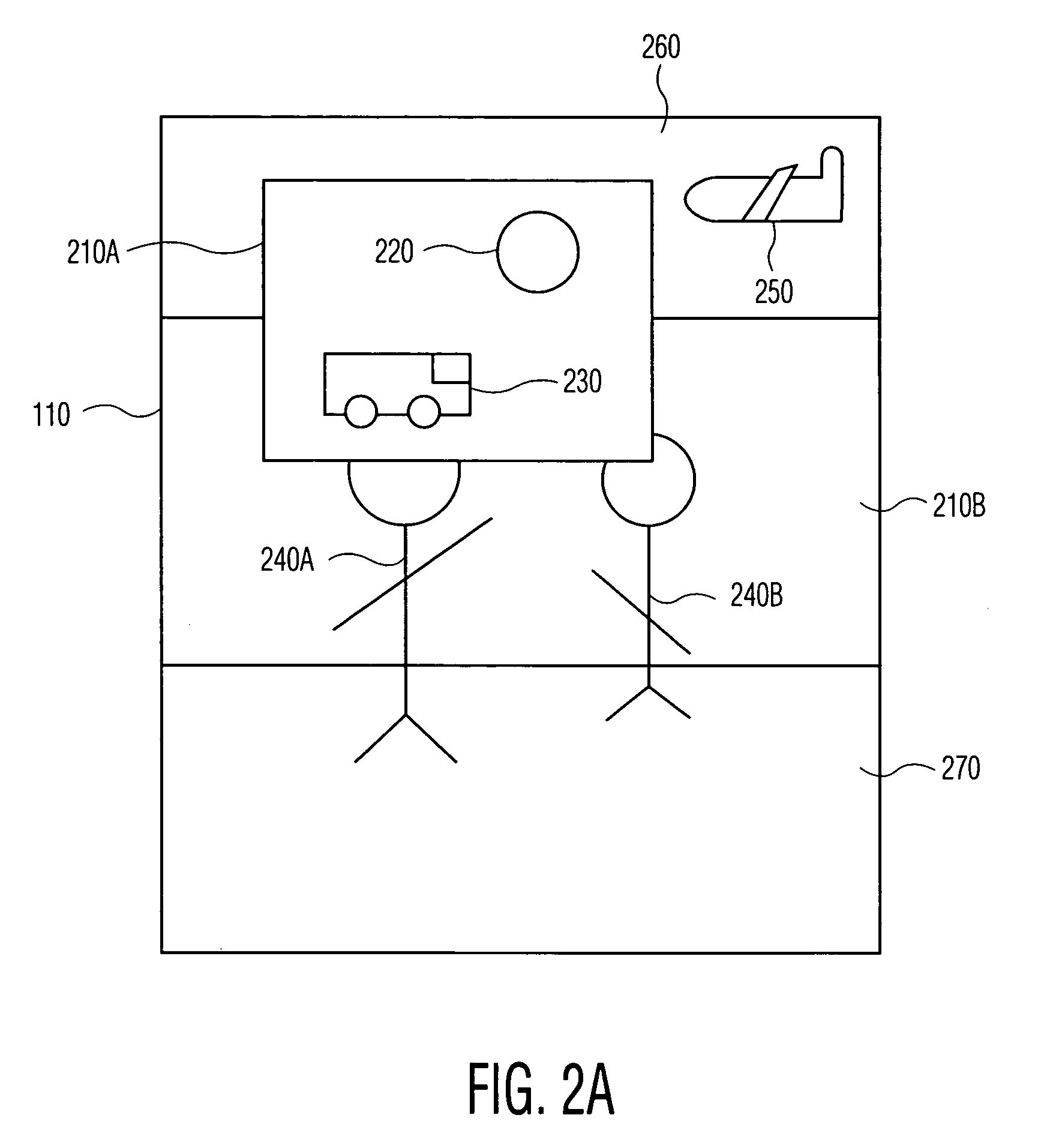Picture-in-picture repositioning and/or resizing based on video content analysis
a video content analysis and image-in-picture technology, applied in the field of home television usage enhancement, can solve the problems of obscuring a portion of the primary display, unwieldy operation for users in real time, and no system to discern which portions are more or less importan
- Summary
- Abstract
- Description
- Claims
- Application Information
AI Technical Summary
Benefits of technology
Problems solved by technology
Method used
Image
Examples
Embodiment Construction
[0014]In the discussion to follow, certain terms will be illustratively discussed in regard to specific embodiments or systems to facilitate the discussion. For example, identified events / behaviors will be described below which represent cues that a processor may utilize to operate in accordance with the present invention. Accordingly, as would be readily apparent to a person of ordinary skill in the art, the term cue / cues should be understood to encompass other similar color / texture / events / behaviors wherein the present invention could be readily applied.
[0015]FIG. 1 shows an illustrative system 100 in accordance with an embodiment of the present invention including a display 110, operatively coupled to a processor 120, and a remote control device 130. The processor 120 and the remote control device 130 are operatively coupled as is known in the art via an infrared (IR) receiver 125, operatively coupled to the processor 120, and an IR transmitter 131, operatively coupled to the remo...
PUM
 Login to View More
Login to View More Abstract
Description
Claims
Application Information
 Login to View More
Login to View More - R&D
- Intellectual Property
- Life Sciences
- Materials
- Tech Scout
- Unparalleled Data Quality
- Higher Quality Content
- 60% Fewer Hallucinations
Browse by: Latest US Patents, China's latest patents, Technical Efficacy Thesaurus, Application Domain, Technology Topic, Popular Technical Reports.
© 2025 PatSnap. All rights reserved.Legal|Privacy policy|Modern Slavery Act Transparency Statement|Sitemap|About US| Contact US: help@patsnap.com



